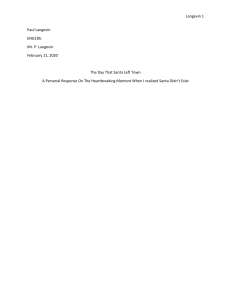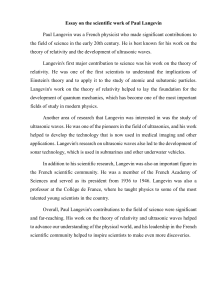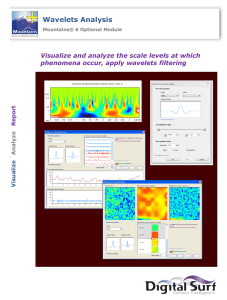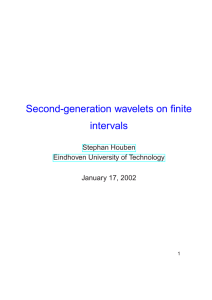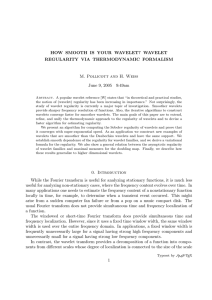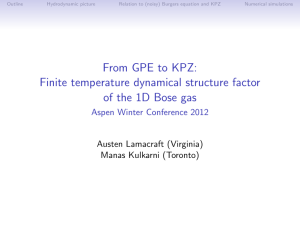Stochastic Wavelet Transform and its application to Stokesian hydrodynamic simulations.
advertisement
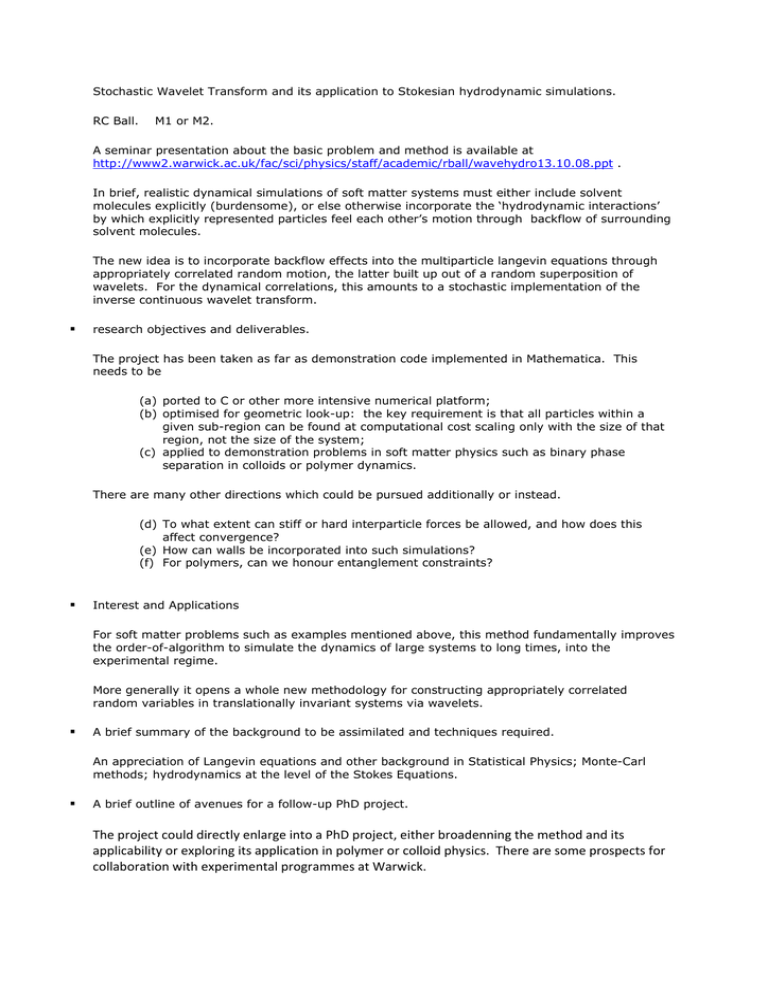
Stochastic Wavelet Transform and its application to Stokesian hydrodynamic simulations. RC Ball. M1 or M2. A seminar presentation about the basic problem and method is available at http://www2.warwick.ac.uk/fac/sci/physics/staff/academic/rball/wavehydro13.10.08.ppt . In brief, realistic dynamical simulations of soft matter systems must either include solvent molecules explicitly (burdensome), or else otherwise incorporate the ‘hydrodynamic interactions’ by which explicitly represented particles feel each other’s motion through backflow of surrounding solvent molecules. The new idea is to incorporate backflow effects into the multiparticle langevin equations through appropriately correlated random motion, the latter built up out of a random superposition of wavelets. For the dynamical correlations, this amounts to a stochastic implementation of the inverse continuous wavelet transform. research objectives and deliverables. The project has been taken as far as demonstration code implemented in Mathematica. This needs to be (a) ported to C or other more intensive numerical platform; (b) optimised for geometric look-up: the key requirement is that all particles within a given sub-region can be found at computational cost scaling only with the size of that region, not the size of the system; (c) applied to demonstration problems in soft matter physics such as binary phase separation in colloids or polymer dynamics. There are many other directions which could be pursued additionally or instead. (d) To what extent can stiff or hard interparticle forces be allowed, and how does this affect convergence? (e) How can walls be incorporated into such simulations? (f) For polymers, can we honour entanglement constraints? Interest and Applications For soft matter problems such as examples mentioned above, this method fundamentally improves the order-of-algorithm to simulate the dynamics of large systems to long times, into the experimental regime. More generally it opens a whole new methodology for constructing appropriately correlated random variables in translationally invariant systems via wavelets. A brief summary of the background to be assimilated and techniques required. An appreciation of Langevin equations and other background in Statistical Physics; Monte-Carl methods; hydrodynamics at the level of the Stokes Equations. A brief outline of avenues for a follow-up PhD project. The project could directly enlarge into a PhD project, either broadenning the method and its applicability or exploring its application in polymer or colloid physics. There are some prospects for collaboration with experimental programmes at Warwick.
